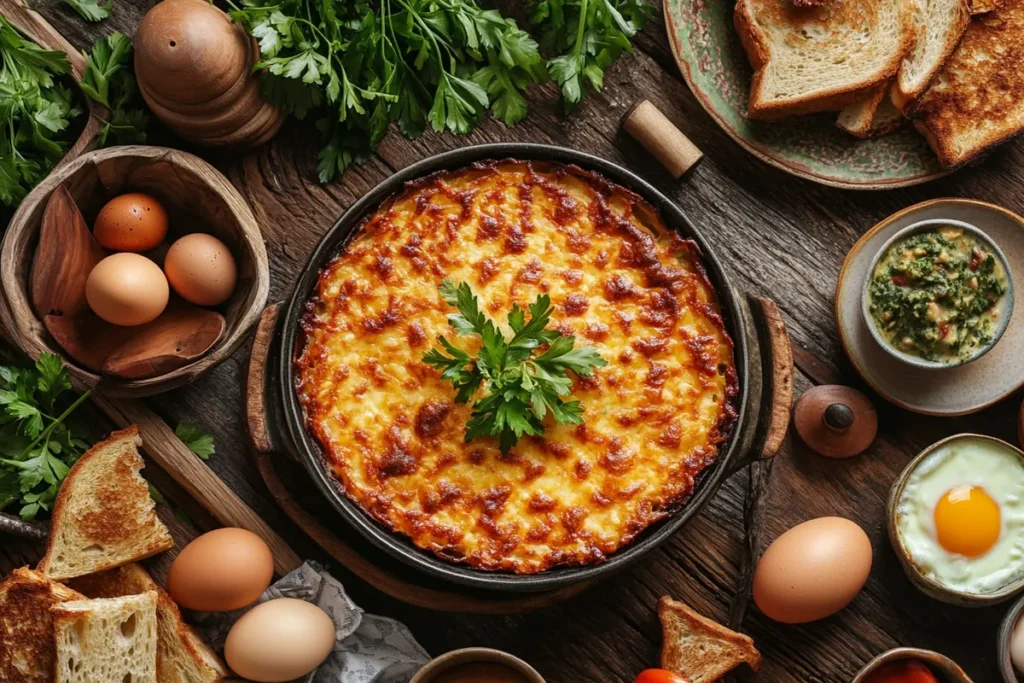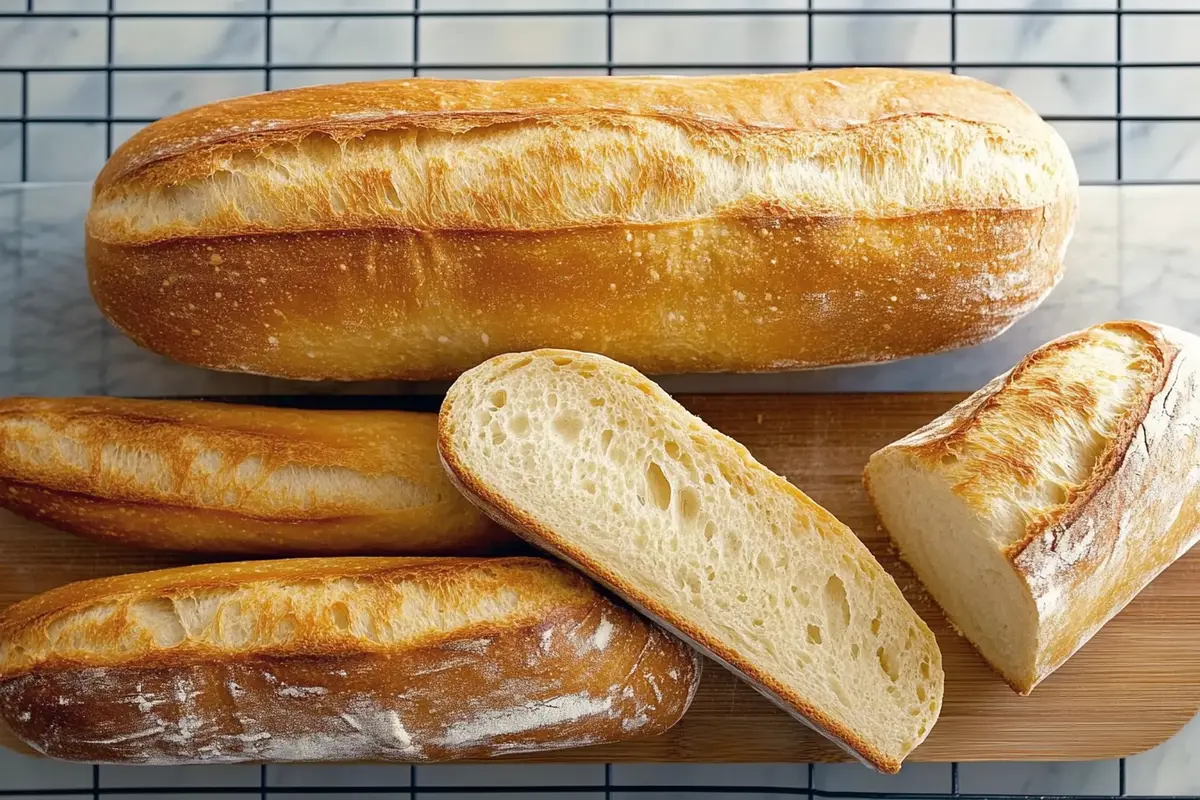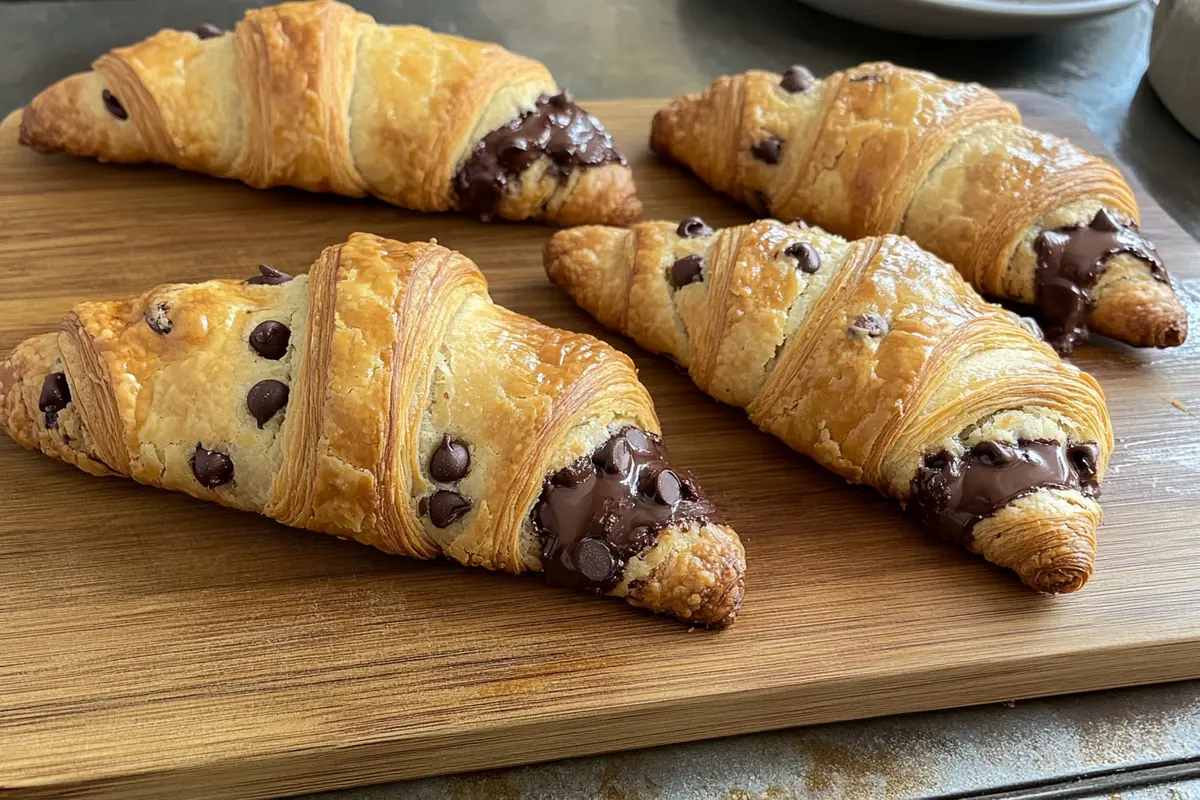Hashbrown casserole is a timeless comfort food, beloved for its creamy, cheesy goodness and easy preparation. This dish has secured a place at breakfast tables, potlucks, and family gatherings. In this guide, we’ll explore its origins, step-by-step preparation methods, and versatile variations like gluten-free and vegetarian options. You’ll also discover serving suggestions, storage tips, nutritional insights, and answers to commonly asked questions. By the end, you’ll have everything you need to create the ultimate hashbrown casserole.
Introduction to Hashbrown Casserole
What is Hashbrown Casserole?
At its core, a hashbrown casserole is a deliciously baked dish that combines shredded potatoes (commonly frozen hashbrowns), a rich cream-based soup, tangy sour cream, melted cheddar cheese, and flavorful seasonings. As a result, this hearty combination creates a dish that is not only creamy and satisfying but also incredibly comforting. Moreover, it can be served as a flavor-packed side dish or even as the star entrée, depending on the occasion.
Over the years, this beloved dish has earned many nicknames, including “cheesy potato bake” and “funeral potatoes,” due to its frequent appearance at potlucks, family dinners, and comforting gatherings. Additionally, its easy preparation and crowd-pleasing flavors have made it a staple in American cuisine. Whether you’re making it for a special occasion or just a cozy night in, hashbrown casserole is a dish that always delivers warmth and satisfaction.
History and Evolution
While the exact origins of the dish remain a mystery, its popularity soared in the mid-20th century alongside the rise of convenient cooking ingredients like frozen potatoes and canned soups. Today, the casserole transcends its humble beginnings, finding a place in everything from casual brunches to holiday feasts. It has evolved with creative twists, from vegetarian-friendly versions to those featuring savory toppings like crispy onions.
Ingredients and Preparation
Essential Ingredients
- Frozen Hashbrowns: The star ingredient, these shredded potatoes provide the perfect texture. Be sure to thaw them for even cooking.
- Cream of Chicken Soup: This adds richness and depth to the casserole’s base. Opt for a low-sodium version for a healthier twist.
- Sour Cream: The tanginess of sour cream balances the dish’s creamy consistency.
- Cheddar Cheese: Sharp cheddar works best for bold flavor, but mild varieties are equally delightful.
- Onion: Finely diced onion adds a hint of sweetness and texture.
- Butter: Melted butter enhances flavor and prevents dryness.
- Seasonings: A pinch of salt, pepper, garlic powder, or paprika brings everything together.
Optional Add-ins
- Green Onions: These add a fresh, savory kick.
- Bell Peppers: Diced peppers contribute vibrant color and a mild crunch.
- Jalapeños: For spice lovers, chopped jalapeños offer a zesty heat.
Step-by-Step Preparation Guide
1. Thawing Hashbrowns
Start by removing the frozen hashbrowns from the freezer, letting them thaw completely. This ensures even cooking and prevents a soggy dish. Spread them out on a clean kitchen towel to absorb excess moisture.
2. Mixing Ingredients
In a large bowl, combine the cream of chicken soup, sour cream, melted butter, and seasonings. Mix thoroughly until smooth, then fold in the shredded cheddar cheese and diced onions. If you’re adding extras like bell peppers or green onions, now’s the time to toss them in.
3. Assembling the Casserole
Grease a 9×13-inch baking dish lightly with butter or non-stick spray. Spread the thawed hashbrowns evenly across the bottom. Pour the cheese and cream mixture over the top, ensuring it coats the potatoes evenly.
4. Baking Instructions
Preheat your oven to 375°F (190°C). Cover the dish with aluminum foil to prevent over-browning, and bake for 30 minutes. Afterward, remove the foil and bake for another 15-20 minutes, or until the top is golden and bubbly. Let it cool slightly before serving—this helps the casserole set for perfect slices.
Variations of Hashbrown Casserole
Vegetarian Hashbrown Casserole
Making a vegetarian hashbrown casserole is not only a breeze but also a great way to add a healthy twist to this classic dish. By making a few simple substitutions and incorporating nutritious vegetables, you can easily create a flavorful, satisfying, and meat-free version that’s perfect for vegetarians.
Moreover, swapping out certain ingredients allows you to maintain the dish’s creamy texture while enhancing its nutritional value. For instance, replacing cream of chicken soup with cream of mushroom or cream of celery soup keeps the dish vegetarian while adding a rich, earthy depth of flavor. Additionally, adding colorful vegetables like spinach, bell peppers, or broccoli boosts both the taste and nutritional content, making every bite even more delicious.
Using Cream of Mushroom Soup
Swap the traditional cream of chicken soup for cream of mushroom soup. This substitution not only keeps the dish vegetarian but also enhances its earthy flavor. You can use store-bought options or prepare your own with fresh mushrooms for a more robust taste.
Adding Vegetables Like Spinach or Broccoli
Vegetables bring vibrant color and added nutrients to the dish. Fresh or frozen spinach works beautifully, blending seamlessly into the creamy base. Broccoli, cut into small florets, adds a satisfying crunch and pairs perfectly with the cheesy goodness. To maintain texture, lightly steam or blanch the vegetables before mixing them into the casserole.
Gluten-Free Hashbrown Casserole
For those avoiding gluten, this variation ensures everyone at the table can enjoy this comforting dish. A few simple swaps make it gluten-free without compromising flavor or texture.
Substituting with Gluten-Free Soup
Instead of regular cream of chicken soup, opt for a gluten-free version. Many brands offer gluten-free alternatives, or you can make your own using cornstarch or rice flour as thickeners.
Ensuring Other Ingredients Are Gluten-Free
Double-check that all your ingredients, including hashbrowns, shredded cheese, and seasonings, are certified gluten-free. Some prepackaged products may contain hidden gluten, so it’s wise to read labels carefully.
By focusing on gluten-free substitutes and diligent ingredient selection, you can confidently serve a dish that meets dietary needs while maintaining its beloved flavor.
Vegan Hashbrown Casserole
A vegan hashbrown casserole is a game-changer for those following a plant-based lifestyle. With creative ingredient swaps, you can still enjoy the creamy, cheesy comfort of this dish.
Using Plant-Based Cheese and Sour Cream
Dairy-free shredded cheese, made from almond or cashew milk, melts beautifully and adds a cheesy flavor. Pair this with plant-based sour cream or unsweetened plain yogurt for the creamy texture that defines hashbrown casseroles.
Replacing Cream of Chicken with Vegan Alternatives
To create a rich and creamy vegan base, you can start by blending soaked cashews with water or using full-fat coconut milk for a smooth and luscious texture. This not only provides a dairy-free alternative but also enhances the casserole’s depth of flavor. Additionally, for a more convenient option, you can substitute with a store-bought vegan cream of mushroom or celery soup, which helps streamline the preparation process without compromising on taste.
Furthermore, these thoughtful substitutions allow you to enjoy a plant-based version that remains just as indulgent and satisfying as the traditional recipe. As a result, everyone at the table—whether vegan or not—can enjoy a delicious and comforting dish that meets their dietary needs. Ultimately, by making these simple yet effective swaps, you can create a vegan hashbrown casserole that is just as creamy, flavorful, and crowd-pleasing as the original.
Serving Suggestions and Accompaniments
Ideal Occasions for Serving
Hashbrown casserole is one of those rare dishes that fits seamlessly into nearly any occasion. Its comforting texture and rich flavors make it a star attraction at various gatherings.
Breakfast and Brunch
This casserole shines at breakfast and brunch, complementing dishes like scrambled eggs and toast. Its heartiness satisfies morning appetites while being simple enough to prepare in advance.
Holiday Gatherings
From Thanksgiving to Christmas, hashbrown casserole graces holiday tables as a perfect side dish. Its versatility allows it to pair with traditional holiday staples like roasted turkey or ham.
Potlucks and Parties
When feeding a crowd, you can’t go wrong with this dish. It travels well and retains its flavor and consistency, making it an excellent choice for potlucks, family reunions, or casual parties.
Complementary Dishes
Beverage Pairings
Choosing the right beverage enhances the dining experience by complementing the casserole’s flavors.
Coffee and Tea
For breakfast or brunch, pair hashbrown casserole with freshly brewed coffee or a soothing cup of tea. The mild acidity of coffee balances the dish’s creaminess.
Juices
Citrusy options like orange or grapefruit juice add a burst of freshness to the meal, making them great choices for morning gatherings.
Storage and Reheating
Refrigeration
Proper Storage Techniques
After baking, allow the casserole to cool completely before storing. Transfer any leftovers to an airtight container or cover the baking dish tightly with plastic wrap or aluminum foil. This helps prevent moisture loss and keeps the dish tasting as good as when it was freshly baked.
Shelf Life in the Refrigerator
When stored correctly, hashbrown casserole remains safe to eat for 3–5 days in the refrigerator. For optimal taste, consume it within this time frame. Always reheat only the portion you plan to eat, as repeated reheating can affect texture and flavor.
Freezing
Steps to Freeze the Casserole
To freeze the casserole effectively, first allow it to cool completely, as this prevents condensation from forming and affecting its texture. Next, wrap the entire baking dish securely with a double layer of plastic wrap to seal in freshness and keep out air. Additionally, add an outer layer of aluminum foil to provide extra protection against freezer burn, ensuring the dish retains its quality. Alternatively, for convenience and quicker reheating later, you can portion the casserole into individual freezer-safe containers. This method not only saves space but also allows for reheating just the amount you need, reducing waste and preserving leftovers. By following these steps carefully, you’ll keep your casserole tasting as delicious as the day it was made!
How Long It Can Be Frozen
Hashbrown casserole can be frozen for up to 2–3 months without significant loss of quality. Label the container with the freezing date to ensure you use it within this timeframe.
Reheating Methods
Oven Reheating
Preheat your oven to 350°F (175°C). If reheating the whole casserole, cover it with foil to prevent drying and bake for 20–25 minutes. For individual portions, 10–15 minutes should suffice.
Microwave Instructions
For quicker reheating, use the microwave. Place a portion on a microwave-safe plate, cover it loosely with a damp paper towel, and heat on medium power in 1–2 minute intervals until warmed through.
Maintaining Texture and Flavor
To keep the dish from becoming dry, add a splash of milk or cream before reheating. Stirring gently halfway through ensures even heating, especially when using a microwave.
Nutritional Information
Caloric Content
Average Calories Per Serving
A standard serving of hashbrown casserole (about 1 cup) contains approximately 250–400 calories. This range depends on the use of full-fat dairy, cheese, and any additional ingredients like butter or sour cream.
Factors Affecting Calorie Count
Calorie content can increase significantly with the addition of rich toppings such as extra cheese or crispy fried onions. Conversely, using light or fat-free versions of dairy products can reduce calories, making it easier to fit this dish into a balanced diet.
Macronutrient Breakdown
Proteins, Fats, and Carbohydrates
Each serving typically contains:
- Proteins: About 8–12 grams, primarily from cheese and cream-based soup.
- Fats: Roughly 15–25 grams, influenced by butter and full-fat dairy.
- Carbohydrates: Approximately 20–30 grams, largely from the potatoes and any added thickeners.
Impact of Different Ingredients
Adding vegetables like broccoli can increase fiber and vitamins without adding calories, while substituting low-fat dairy reduces fat content. Understanding these elements allows you to customize the casserole to fit dietary needs.
Health Considerations
Managing Portion Sizes
Serving size is critical to maintaining balance. Enjoy the dish as a side rather than a main course to control caloric intake while savoring its rich flavors.
Healthier Ingredient Substitutions
For a lighter version, use reduced-fat cheese, light sour cream, and a homemade low-calorie soup base. Replacing a portion of the potatoes with grated zucchini or cauliflower can reduce carbs while maintaining the casserole’s texture.
Frequently Asked Questions (FAQs)
Can I make hashbrown casserole ahead of time?
Absolutely! Preparing hashbrown casserole in advance is a great time-saver for busy schedules or big gatherings.
Preparation Steps for Making in Advance
Follow all the steps to assemble the casserole, but stop before baking. Once the ingredients are layered in the dish, cover it tightly with plastic wrap or foil. Refrigerate the uncooked casserole for up to 24 hours.
Storage Recommendations
Ensure the casserole is stored in an airtight container or well-covered dish to prevent it from absorbing fridge odors. When ready to bake, let it sit at room temperature for 15–20 minutes before placing it in the oven.
How do I prevent my hashbrown casserole from being soggy?
Nobody likes a watery casserole! Here’s how to ensure your dish is creamy and delicious.
Tips for Achieving the Right Texture
Thaw and drain the hashbrowns thoroughly before use. Excess moisture can lead to a soggy casserole. Pat them dry with a clean kitchen towel for best results.
Importance of Proper Ingredient Measurements
Stick to the recommended proportions of cream, cheese, and hashbrowns. Overloading with wet ingredients like soup or sour cream can tip the balance, resulting in an overly moist dish.
Can I use fresh potatoes instead of frozen hashbrowns?
Yes, fresh potatoes can be a great alternative, though they require extra preparation.
Preparation Steps for Fresh Potatoes
Peel and shred the potatoes using a grater or food processor. Soak the shredded potatoes in cold water to remove excess starch, then drain and pat them dry.
Pros and Cons of Using Fresh vs. Frozen
Fresh potatoes provide a firmer texture and slightly earthier flavor. However, they require more prep time compared to the convenience of frozen hashbrowns.
What can I substitute for cream of chicken soup?
Whether for dietary restrictions or personal preference, several alternatives exist.
Alternative Soup Options
Cream of mushroom, celery, or even a dairy-free vegetable soup works wonderfully. These options can cater to vegetarians and add unique flavors.
Homemade Soup Recipes
Make a quick roux with butter, flour, and milk or broth. Add seasonings like garlic powder and onion powder to mimic the richness of canned soup.
How can I add a crunchy topping to my casserole?
A crispy topping elevates the casserole, adding texture and flavor.
Using Cornflakes, Breadcrumbs, or Crushed Chips
Sprinkle crushed cornflakes, buttery breadcrumbs, or crushed potato chips over the casserole before baking. These options create a golden, crunchy crust.
Application Techniques Before Baking
Toss the topping in melted butter for extra crispiness, and spread it evenly over the surface. Bake uncovered for the last 10–15 minutes to achieve a crunchy finish.
Is hashbrown casserole suitable for breakfast?

Ultimate Guide to Perfect Hashbrown Casserole: Recipes, Tips & FAQs
- Total Time: 55 minutes
- Yield: 8 servings 1x
- Diet: Vegetarian
Ingredients
- 1 (30 oz) bag frozen hashbrowns, thawed
- 1 (10.5 oz) can cream of chicken soup (or cream of mushroom for a vegetarian version)
- 2 cups shredded sharp cheddar cheese
- ½ teaspoon garlic powder
- 1 ½ cups sour cream (full-fat or light)
- ½ cup unsalted butter, melted
- ½ cup finely diced onion
- 1 teaspoon salt
- ½ teaspoon black pepper
- ½ teaspoon paprika (optional, for added depth of flavor)
Optional Add-ins:
- ½ cup chopped bell peppers (for added crunch and color)
- ½ teaspoon red pepper flakes (for a slight kick)
- ¼ cup chopped green onions (for extra freshness)
- ½ cup cooked and crumbled sausage (if making a hearty breakfast casserole)
Instructions
1: Preheat the Oven
Preheat your oven to 375°F (190°C). Lightly grease a 9×13-inch baking dish with butter or non-stick spray to prevent sticking.
2: Thaw and Prepare Hashbrowns
If using frozen hashbrowns, ensure they are completely thawed. Spread them out on a clean kitchen towel or paper towels and pat them dry to remove excess moisture. This prevents a soggy casserole.
3: Mix the Wet Ingredients
In a large mixing bowl, combine the cream of chicken soup, sour cream, melted butter, diced onion, salt, pepper, garlic powder, and paprika. Stir well until all ingredients are fully incorporated into a smooth mixture.
4: Add the Cheese and Hashbrowns
Gently fold in 1 ½ cups of shredded cheddar cheese (reserve the remaining ½ cup for topping) and the thawed hashbrowns. Mix until the potatoes are evenly coated with the creamy mixture. If adding extras like bell peppers, cooked sausage, or green onions, stir them in at this stage.
5: Assemble the Casserole
Pour the mixture into the prepared baking dish, spreading it out evenly with a spatula. Sprinkle the remaining ½ cup of shredded cheddar cheese over the top.
6: Prepare the Crunchy Topping (Optional)
For an extra crispy topping, mix the crushed cornflakes (or panko breadcrumbs) with melted butter in a small bowl. Sprinkle this evenly over the top of the casserole for added crunch and texture.
7: Bake the Casserole
Cover the baking dish with aluminum foil and bake in the preheated oven for 30 minutes. After 30 minutes, remove the foil and continue baking for another 15-20 minutes, or until the top is golden brown and bubbling.
8: Let It Rest Before Serving
Once baked, remove the casserole from the oven and let it sit for 5-10 minutes before serving. This helps the dish set and makes it easier to slice and serve.
- Prep Time: 10 minutes
- Cook Time: 45 minutes
- Category: Breakfast, Side Dish
- Method: Baking
- Cuisine: American
Nutrition
- Serving Size: 1 cup (approx. 150g)
- Calories: 330 kcal
- Sugar: 2 g
- Sodium: 550 mg
- Fat: 22 g
- Saturated Fat: 12 g
- Unsaturated Fat: 8 g
- Trans Fat: 0 g
- Carbohydrates: 28 g
- Fiber: 2 g
- Protein: 8 g
- Cholesterol: 45 mg
Keywords: Cheesy potato bake, Funeral potatoes, Breakfast casserole




